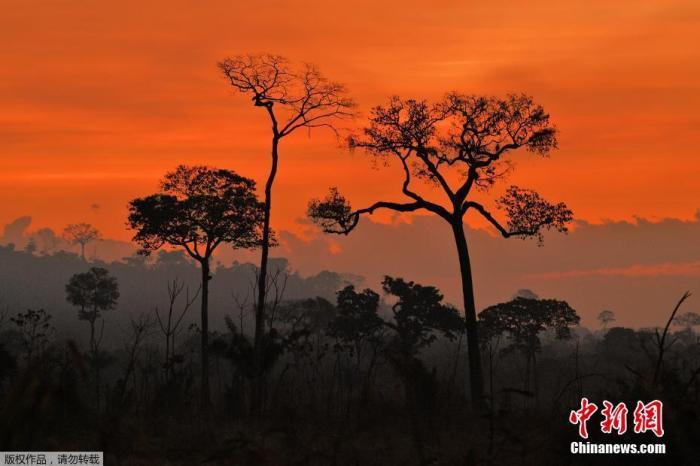China News Service, September 15th. According to a report by the Central News Agency on the 14th, Brazil, located in the southern hemisphere, will experience high temperatures, forest fires, dry weather, and air in many places in the winter of 2020 due to unusual climate phenomena and human behavior. Poor quality and other issues have caused "black rain" in some places.
Data map: On August 16, 2020, local time, the fire in the Amazon Rainforest Reserve south of New Preso, Pará, Brazil, continued with thick smoke.
Forest fires mainly affect the two Brazilian biomes of the Amazon and Pantanal.
In the Pantanal alone, the fire brigade’s extinguishing operations have been going on for more than a month, and experts estimate that at least 12% of the ecosystem has been destroyed.
In addition to the destruction of the biome, forest fires in the wetlands also caused many animal deaths and injuries.
During the fire fighting operation, at least one volunteer firefighter was killed.
Forest fires also broke out in the Atlantic jungle (Mata Atlantica) in southeastern Brazil.
Since September, the state of São Paulo has seen an average of 65 new fire sites every day, six times more than the record in the same period in 2019.
The dense smoke caused by forest fires has exacerbated the air pollution problems in various parts of Brazil. For example, the dense smoke caused by the Pantanal wetland forest fire even drifted with the wind to Guritiba, the capital of Paraná state in southern Brazil, more than 1,000 kilometers away.
The satellite image released by the Brazilian National Space Agency (Inpe) pointed out that heavy smoke from forest fires in the Amazon and Pantanal had spread over 3,000 kilometers across Brazilian territory, starting from Mato Grosso and Mato Grosso Sul in the midwest. It has now arrived in southern Brazil, causing "black rain" in the southernmost state of Süd.
The dry climate also exacerbated the spread of the fire.
In 2020, the Pantanal wetland experienced its longest dry season in 47 years.
Researchers from Embrapa, a Brazilian agricultural research institution, pointed out that La Niña may be the main cause of the historic drought in wetland biomes.
In addition, strong winds also aggravated the spread of the fire.
Brazil’s National Institute of Meteorology (Inmet) has issued low humidity, fire and health risk warnings in the Midwest, Northeast, São Paulo and Minas Gerais states.
According to the research institute, the relative humidity of these places is between 12% and 20%. People should drink plenty of water, keep their skin hydrated, avoid sun exposure during the hottest part of the day, and keep the environment moist.
Except for dry weather, many places in Brazil have temperatures above average.
For example, Cuiaba, the capital of Mato Grosso State, had a temperature of 42.7 degrees Celsius on the 13th, the highest temperature in nearly a century.

